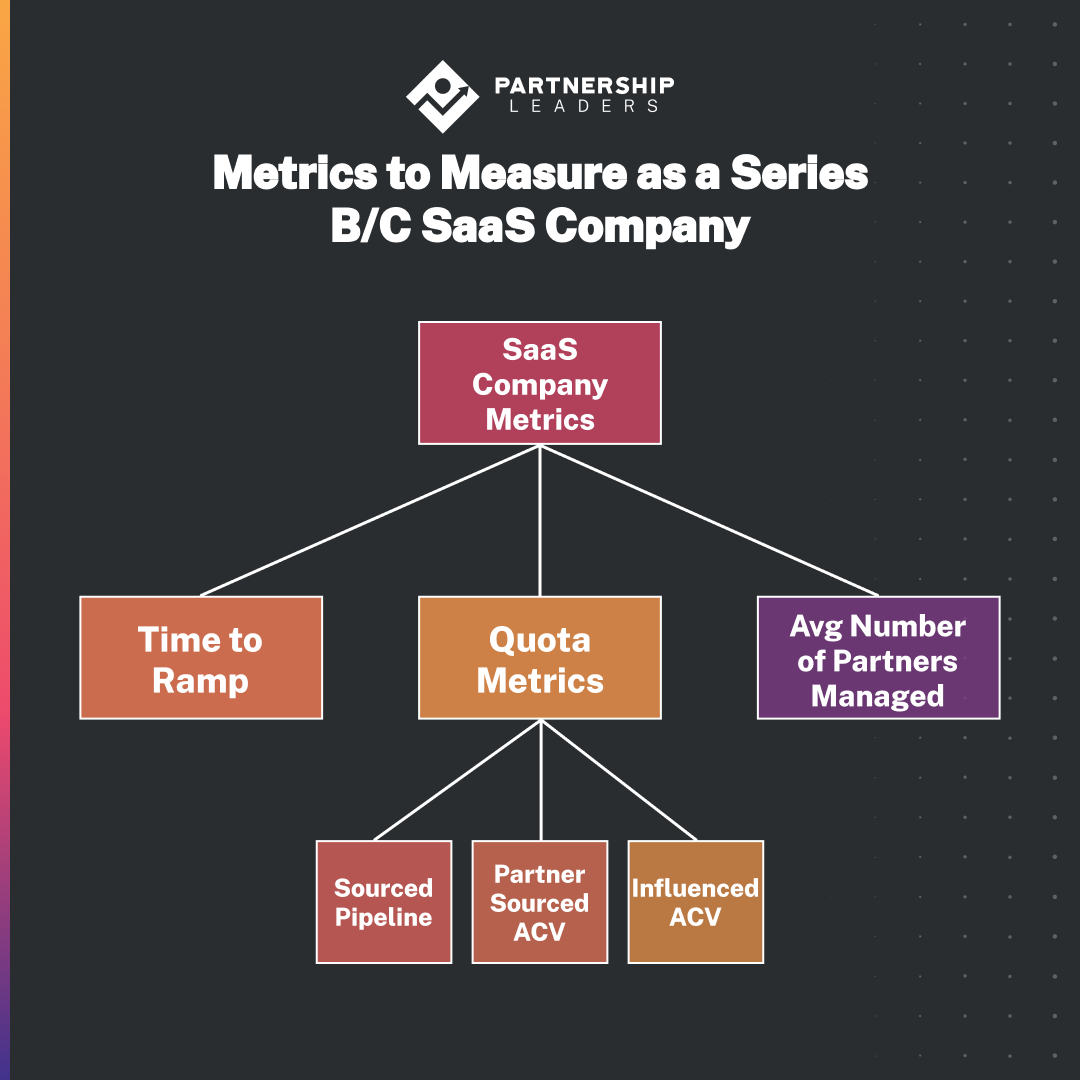Partnership programs can be game-changers for series B and C companies looking to scale effectively. They’re strategic endeavors that can significantly amplify a company’s reach and resources. But like any good relationship, building a successful partnership program requires understanding, patience, and a solid framework.
So how should you do it?
We’re here to explore what it takes to build a thriving partnership ecosystem that fosters sustainable growth.
Setting Up for Success
The foundation of any successful partnership program in the SaaS domain hinges on the expertise and vision of the Global Head of Partnerships. This role is about forging new alliances and steering these relationships towards mutual growth and success.
It’s a complex dance of aligning several factors between differing entities, such as:
- Goals
- Resources
- Market positions
A seasoned head of partnerships comes equipped with a track record of initiating and scaling partner programs effectively.
Early stages of partnership development are critical.
Within the first quarter, it’s essential to assess whether a partner is the right fit. This early validation can save months, even years, of stagnation. It’s a fine line to tread – being too hasty can burn potential bridges, while too cautious an approach might lead to missed opportunities.
The key is to establish clear milestones that gauge forward momentum, ensuring that the partnership is always moving towards predefined goals. This approach sets the stage for a robust program that can scale as needed without losing sight of its core objectives.
Metrics to Measure
To truly gauge the success of partnership programs, specific metrics must be closely monitored. These metrics serve as the compass that guides the partnership strategy:

- Time to Ramp: This measures how long it takes for a new partner function to operate at full capacity. Ideally, a partner program should be fully functional within 1-2 years. It’s a critical metric, indicating the efficiency of the partner onboarding process and readiness to drive value.
- Quota Metrics
- Sourced Pipeline: The total value of opportunities the partner brings, serving as a leading indicator of future sales.
- Partner Sourced ACV: The value of contracts sourced directly by partners, reflecting their contribution to new business.
- Influenced ACV: The value of sales influenced by partners, even if not directly sourced by them, showcasing the partner’s overall impact on the sales process.
- Average Number of Partners Managed: This number varies depending on the partner’s type, indicating the workload and focus a partner manager can reasonably handle. A partner manager typically oversees 5-7 regional partners or 1-2 Global System Integrators (GSIs). This metric helps maintain the quality of support and engagement provided to each partner.
These metrics are narratives that tell the tale of a partnership program’s effectiveness and its contribution to the company’s overarching goals. Monitoring them closely allows for real-time adjustments and strategic alignment, ensuring that the partnership program remains on the path to success.
Managing Partnership Programs
As partnership programs mature, they often evolve to accommodate changes in market conditions and company strategy. It requires a nuanced approach, with an understanding that different types of partners bring different dynamics to the table. Here’s a snapshot of how to navigate this:
- Regional System Integrators (RSIs): They usually require a more hands-on approach, with a partner manager typically overseeing between 5-7 RSIs. This ratio allows for tailored strategies that resonate with local markets and customer needs.
- Global System Integrators (GSIs): Due to their larger scale, a partner manager may only manage 1-2 GSIs. The focus is leveraging global reach and aligning with broader market trends.
Effective management also involves setting clear and attainable quotas. These quotas vary depending on the market segment and the partner’s capacity. For example, for a new RSI in a lower market segment, a reasonable annual quota might range from $500,000 to $750,000 in ACV.
A partner manager’s role extends beyond just numbers. It’s about nurturing relationships, aligning visions, and creating synergy.
Regular check-ins, clear communication channels, and defined KPIs are crucial for a transparent and productive partnership. The goal is to build a program where both parties are invested in the success of the other, creating a positive feedback loop that drives continuous growth.
Growth Trajectory
The trajectory of a partnership program is a critical indicator of its long-term viability and success. As such, it’s important to have a clear plan that outlines expected growth and the metrics that will be used to measure it over time.
Here are the key elements to consider when plotting the growth trajectory:
- Yearly Benchmarks: Establish clear benchmarks for partner pipeline, sourced won ACV, influenced ACV, and new logo partner influence percentage for each year.
- Partner Prime Rate: This is the percentage of business a partner is directly responsible for. A growing prime rate indicates a strengthening relationship and increased reliance on the partnership.
- Expansion Goals: Set specific targets for expanding the size of the partner function in years 1, 2, and 3.
Here’s what your growth trajectory should look like:
- First year: The focus is on laying a solid foundation, emphasizing integrating partners into the company’s ecosystem and aligning them with the company’s strategic goals.
- Second year: See a more significant contribution from partners to the pipeline and revenue, with an increased new logo partner influence percentage.
- Third year: Show maturity in the partnership with a stable and increased partner prime rate, indicating the partner is not just contributing but also shaping the direction of sales and market approach.
These growth metrics serve as aspirational targets and roadmaps for series B/C SaaS companies. They should be revisited and revised regularly to reflect the changing dynamics of the business and market. A forward-thinking approach, coupled with data-driven insights, will enable the partnership program to evolve and scale effectively, supporting the company’s broader objectives for market expansion and revenue growth.
Conclusion
Partnership programs are crucial for SaaS companies looking to scale comfortably. Establishing a well-defined program with clear benchmarks for success is just the starting point. As we’ve discussed, it’s about managing relationships, measuring impact, and adapting growth strategies to changing market dynamics. Remember, the strength of a partnership lies in the continuous pursuit of shared success – a goal that, when achieved, benefits all parties involved.
Join The 1850+ Leaders Transforming Partnerships
As a member of Partnership Leaders you will:
- Build and learn with the top partner people at the best companies around the world.
- Increase your impact and accelerate your career with proven resources, tools, and best practices.
- Grow a network of peers, partners, and advisors with common objectives.


